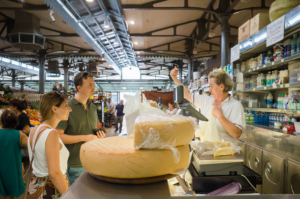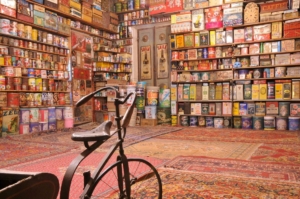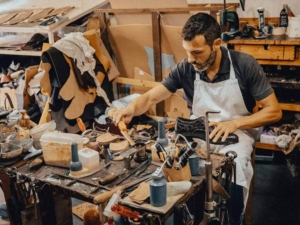Modena Cathedral: a masterpiece of faith, art, and legend
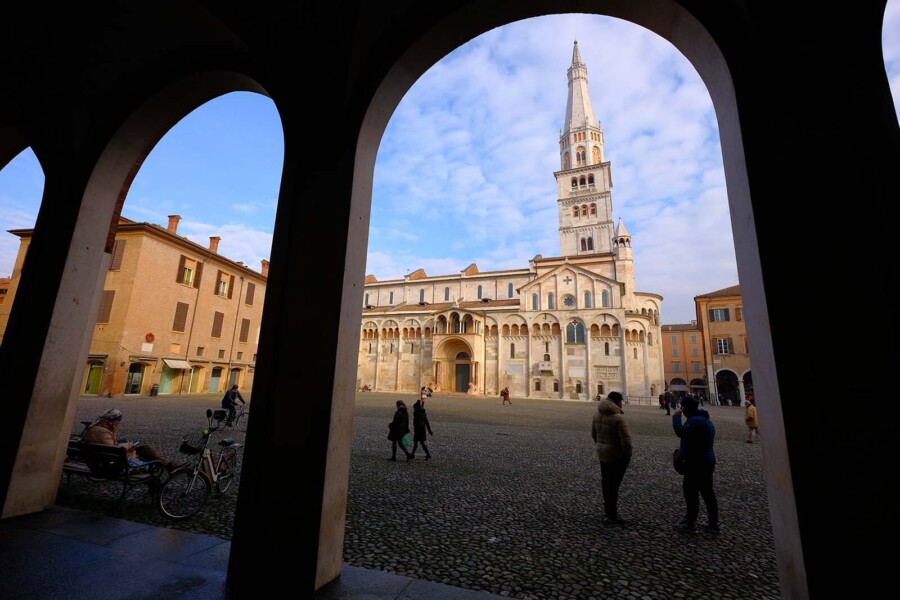
The Modena Cathedral, also known as the Duomo di Modena, stands as one of the finest examples of Romanesque architecture in Europe.
Located in the heart of Piazza Grande Modena, this UNESCO World Heritage Site has captivated visitors for centuries with its rich history, stunning art, and spiritual significance.
As you explore this magnificent landmark, you’ll encounter a story that intertwines architectural innovation, religious devotion, and the cultural identity of the city of Modena.
The history of Modena Cathedral
The Modena Cathedral was begun in 1099, under the guidance of the architect Lanfranco, replacing an earlier Christian basilica.
The cathedral was conceived as a place to honor Saint Geminiano, the patron saint of Modena, whose mortal remains are housed within the crypt.
Constructed primarily from ancient Roman stones, the building connects the glory of antiquity with the emerging Romanesque style.
The intricate carvings by Wiligelmo, one of the most celebrated sculptors of the period, grace the facade with biblical scenes, demonstrating a harmonious relationship between architecture and sculpture—a hallmark of Romanesque art.
The Modena Cathedral, along with the Ghirlandina Tower and Piazza Grande, was designated a UNESCO World Heritage Site in 1997 for its outstanding artistic and cultural value.
UNESCO described it as a “masterpiece of human creative genius.”
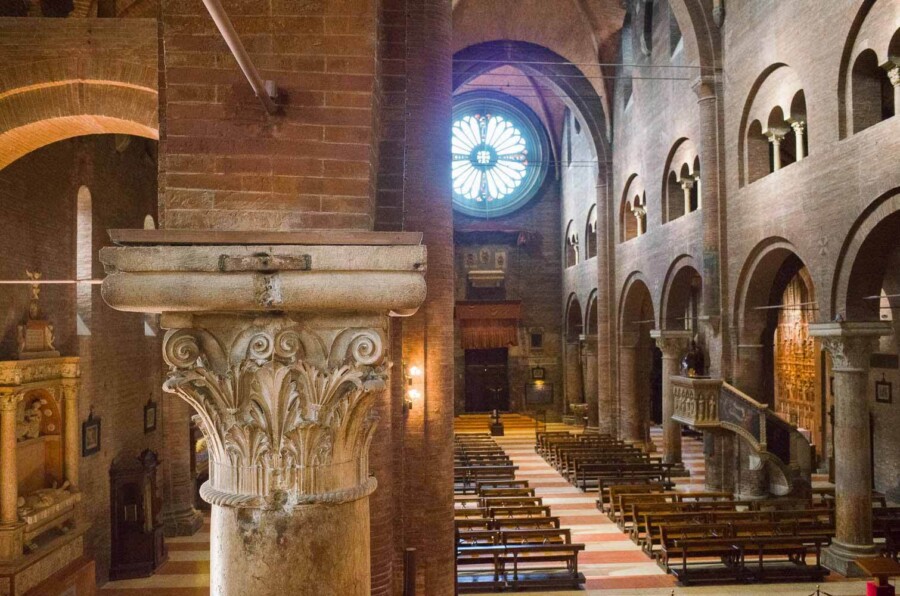
The central nave of Modena Cathedral
Architectural highlights of Modena Cathedral
The facade and sculptures
One of the most striking features of the Modena Cathedral is its richly adorned facade. Wiligelmo's carvings are celebrated for their expressive storytelling, depicting scenes from the Old and New Testament.
These carvings reflect the medieval view of humanity's place within divine history.
The use of Roman spolia—stones repurposed from ancient Roman buildings—gives the cathedral a timeless connection to the classical past.
These materials not only enhance the beauty of the cathedral but also symbolize continuity and renewal.
The Porta della Pescheria
On the north side of the cathedral, you’ll find the Porta della Pescheria, a doorway rich in medieval symbolism and mystery.
Originally located near the city’s fish market, the portal is adorned with fascinating carvings.
Among the most famous is a depiction of the Arthurian legends, making this one of the earliest known representations of King Arthur’s tales in European art.
The carvings also include a whimsical calendar cycle, showing the labors of the months. These images provide insight into the daily lives and activities of medieval society, blending the sacred purpose of the cathedral with a portrayal of earthly concerns.
The interior
Inside, the cathedral is an austere yet awe-inspiring space.
The high vaulted ceilings, simple stone walls, and dim lighting create an atmosphere of reverence and reflection. The central nave is flanked by two aisles, divided by rows of sturdy columns that guide the eye toward the altar.
The crypt, where the remains of Saint Geminiano are housed, is one of the most spiritually significant parts of the cathedral.
The saint’s relics rest in a modest 4th-century urn, covered by a stone slab supported by four columns.
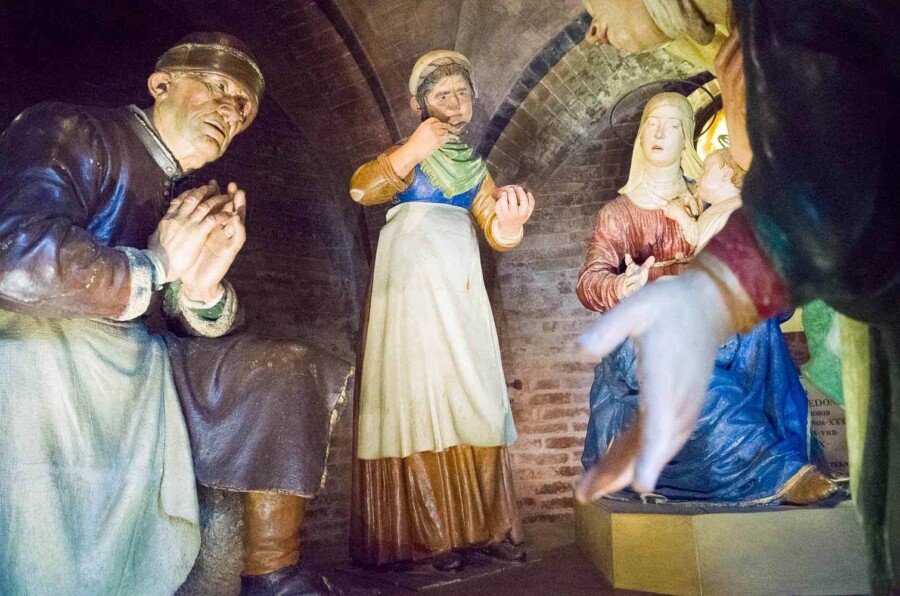
Madonna della Pappa terracotta statues
The Madonna della Pappa: a touch of intimacy
Inside the cathedral, one of its most charming treasures is the Madonna della Pappa, a terracotta sculpture attributed to Guido Mazzoni, a renowned Renaissance artist.
This tender depiction shows a domestic scene full of warmth and humanity. On the right of the Virgin Mary is a figure affectionately known as "Suor Papina", a nun who blows on the hot soup in the spoon to cool it before offering it to the Baby Jesus.
Adding a delightful touch, the Christ Child is depicted holding a bensone, a traditional Modenese cake.
This work of art brings a sense of familiarity to the divine, humanizing religious figures and inviting viewers to connect emotionally with the scene.
Osso di Drago: a fascinating legend
Near the entrance of the Modena Cathedral, you’ll find a curious artifact known as the Osso di Drago, or Dragon’s Bone.
This large bone, which hangs from a chain, has been a source of legend and intrigue for centuries.
While some believe it belonged to a mythical dragon slain by Saint Geminiano, historians suggest it is likely the rib of a prehistoric whale or a dinosaur bone, brought to Modena during the Middle Ages as a relic or curiosity.
For locals, the Osso di Drago symbolizes protection and mystery, tying the cathedral to the realm of legends and adding another layer to its already rich narrative.
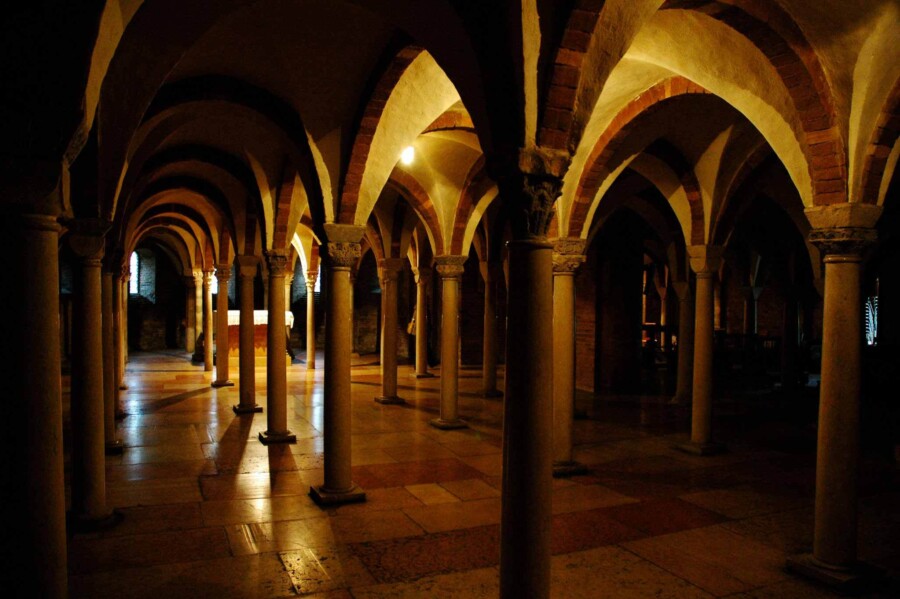
The crypt of Modena Cathedral
Who is buried in Modena Cathedral?
The Duomo di Modena holds the tomb of Saint Geminiano, the patron saint of the city.
According to tradition, the saint lived during the 4th century and was a bishop who protected Modena from invaders through his prayers.
His mortal remains lie in the crypt, a place of pilgrimage for those seeking his intercession.
The crypt’s design emphasizes humility and simplicity, reflecting the spiritual essence of Saint Geminiano.
Visitors often remark on the powerful sense of history and devotion that permeates this sacred space.
The Ghirlandina tower: a symbol of Modena
No visit to the Modena Cathedral is complete without admiring the adjacent Ghirlandina Tower.
This iconic bell tower rises to a height of 86 meters, dominating the skyline of Modena.
The name "Ghirlandina" refers to the two decorative marble balustrades at the top, which resemble garlands.
The tower served both as a religious structure and a symbol of civic pride, asserting Modena’s independence during medieval times.
Climbing the tower rewards visitors with breathtaking panoramic views of the city and surrounding countryside.
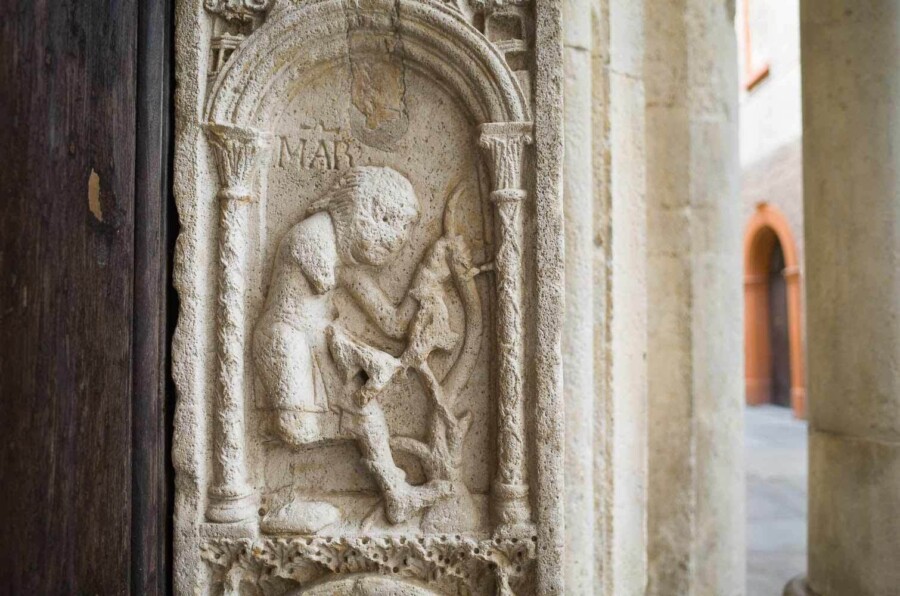
Porta della Pescheria
Piazza Grande in Modena: the heart of the city
The Piazza Grande is much more than just the square where the Modena Cathedral stands—it is the vibrant heart of the city.
Surrounded by historic buildings, including the Palazzo Comunale, the piazza has been a gathering place for centuries. Its cobblestone paving and open layout provide the perfect setting to appreciate the grandeur of the cathedral and the Ghirlandina Tower.
During the annual celebrations of Saint Geminiano on January 31st, the piazza comes alive with processions, markets, and festivities that pay tribute to the city's patron saint.
Explore Modena’s wonders
The Modena Cathedral is a masterpiece where history, art, and legend come together.
From the stunning sculptures of Wiligelmo to the mysterious Osso di Drago and the charming Madonna della Pappa, every detail tells a story. Combined with the majestic Ghirlandina Tower and lively Piazza Grande, this UNESCO World Heritage Site offers a glimpse into the soul of Modena.
Make your visit even more memorable by savoring Modena’s famous flavors.
Join our Modena food tour to taste local treasures like balsamic vinegar, Parmigiano Reggiano, and traditional bensone.
Book your tour today and discover Modena’s history and cuisine in one unforgettable experience!
[cover photo: Enrique RG]
